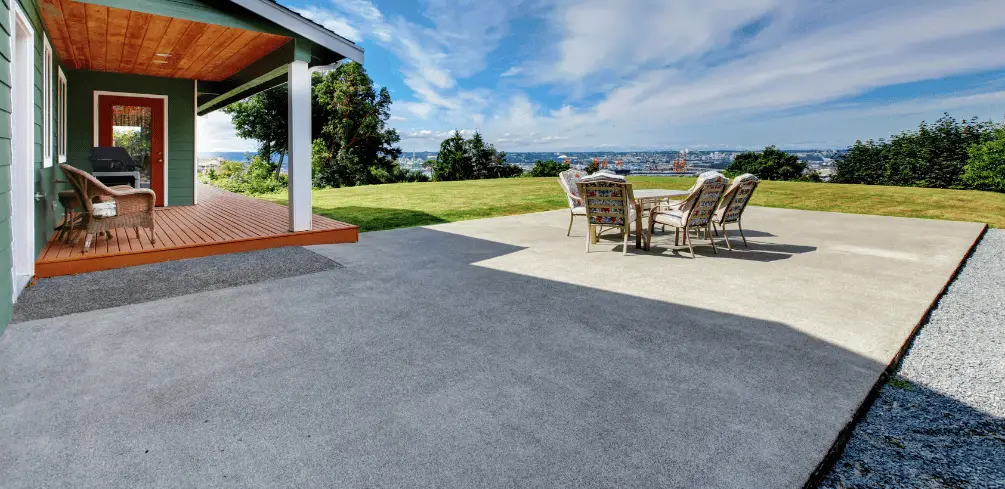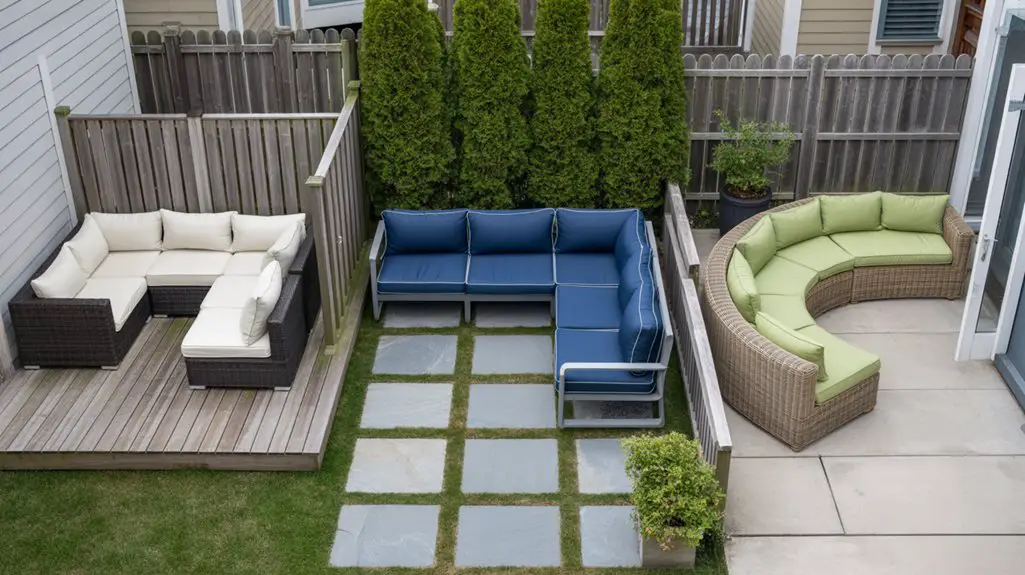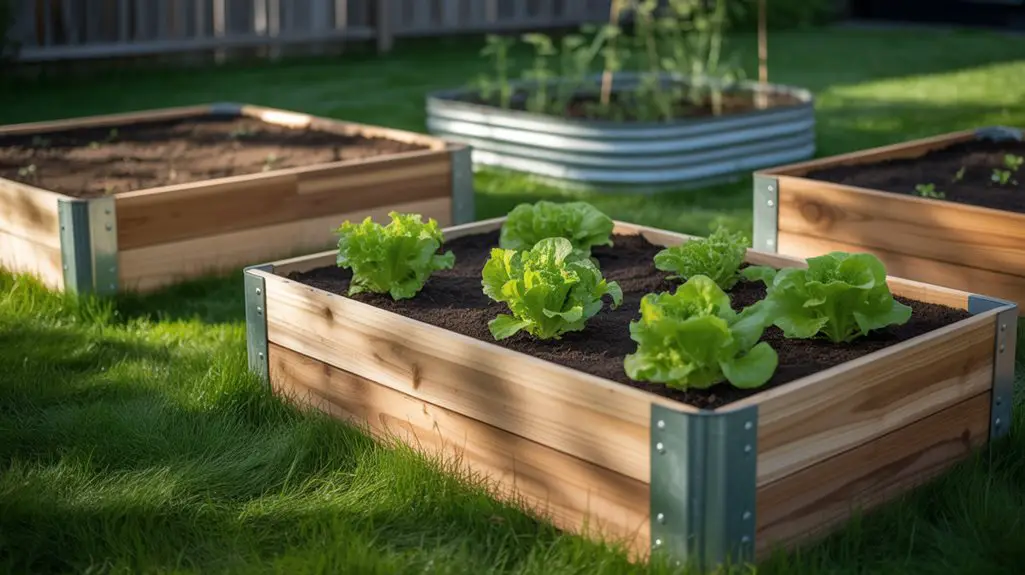Did you know that the average American spends approximately 70 hours a year on lawn care?
That’s nearly three entire days dedicated to maintaining your little slice of nature.
If you’re searching for a low-maintenance alternative, concreting your entire backyard might be an option worth considering. By transforming your outdoor space into a sleek and modern oasis, you can spend less time mowing and more time enjoying your backyard.
However, before diving headfirst into this project, it’s essential to evaluate both the benefits and challenges that come with such a significant change. From drainage solutions to alternative low-maintenance options, this article will guide you through everything you need to know about concreting your entire backyard.
So sit back, relax, and let us enlighten you on how to create the perfect outdoor space tailored specifically to your needs and preferences.
Advantages of a Concreted Outdoor Space

There’s no denying the convenience and satisfaction that comes with a beautifully concreted outdoor space. It can turn your backyard into an inviting haven for gatherings and relaxation.
Outdoor aesthetics play a significant role in creating an ambiance that reflects your style and enhances the overall look of your property. With a well-designed concrete backyard, you can incorporate various elements such as decorative planters, seating areas, and even water features to create a stunning focal point.
A concreted backyard offers numerous advantages when it comes to maintenance and durability. Unlike grass or other landscaping materials, concrete is easy to clean – just sweep or hose it down to remove dirt and debris.
Additionally, concrete surfaces are more resistant to wear and tear from foot traffic or weather conditions, ensuring your outdoor space remains attractive for years to come.
This low-maintenance aspect not only saves you time but also helps reduce long-term costs associated with yard upkeep. Another compelling reason to consider concreting your entire backyard is the potential increase in property value.
A well-executed design can significantly boost curb appeal by showcasing a functional yet visually appealing outdoor living area.
Prospective buyers often appreciate the practicality of a low-maintenance yard combined with the added benefit of increased usable square footage for entertaining or relaxing outdoors.
By investing in a high-quality concrete backyard transformation, you’re likely to see a return on investment through enhanced desirability and marketability of your home should you decide to sell in the future.
Potential Drawbacks and Concerns

Imagine the frustration of dealing with cracked or damaged pavement, drainage issues, and higher costs in maintenance after deciding to cover every inch of green space in solid material.
While concreting your entire backyard might seem like a practical solution for some purposes, it’s crucial to consider the potential drawbacks and concerns before jumping into such a significant undertaking.
Concrete cracking and safety hazards are just two examples of the problems that may arise from an entirely concreted outdoor space.
Here’s a table to help paint a picture for you:
| Drawbacks | Concerns |
|---|---|
| Concrete cracking | Safety hazards |
| Drainage issues | Increased expense |
| Loss of greenery | Reduced home value |
Incorporating concrete throughout your backyard may lead to undesirable consequences, such as increased heat absorption due to a lack of natural vegetation.
This absence of greenery can not only affect your outdoor experience but also negatively impact the local ecosystem by reducing homes for wildlife and contributing to urban heat island effects.
Furthermore, drainage becomes a considerable concern as rainwater will no longer be absorbed into the ground; instead, it may pool on surfaces or cause runoff that could damage surrounding properties or overwhelm storm drains.
Of course, there are instances where having more concrete can be useful or necessary.
However, it is essential to weigh these benefits against the potential drawbacks and concerns carefully before fully committing yourself to this decision.
And if you do decide that creating an entirely concreted outdoor space is right for your needs, ensure proper measures are taken during installation and maintenance to minimize any negative impacts mentioned earlier.
Drainage Solutions for Concrete Surfaces

It’s crucial to address drainage issues when designing a fully concreted outdoor space, as proper solutions can help prevent water damage and ensure a safe, functional environment.
One important aspect to consider is slope considerations. When planning the layout of your concrete surfaces, it’s essential to incorporate the right slopes that will direct rainwater away from your home and other structures.
Generally speaking, you should aim for a slope of at least 1/4 inch per foot, which will allow water to efficiently drain without causing pooling or erosion.
Another effective option for addressing drainage concerns with concrete surfaces is using permeable pavement. Unlike traditional impermeable surfaces that force water to run off the sides, permeable pavement allows water to seep through its pores and into the underlying layers of soil or gravel.
This helps reduce runoff and decreases the risk of flooding in your backyard while also filtering pollutants from stormwater before it reaches groundwater supplies.
Additionally, installing permeable paving materials like porous concrete or permeable pavers can provide an attractive design element that complements your overall aesthetic vision.
By incorporating these drainage solutions into your fully concreted backyard plan, you’ll not only protect your property from potential water damage but also create a more eco-friendly outdoor space that harmonizes with nature rather than working against it.
Thoughtful consideration of slope gradients and innovative materials like permeable pavement ensures that your backyard remains both beautiful and functional throughout all seasons while addressing any potential environmental concerns associated with increased impervious surface coverage.
So go ahead— transform your outdoor area into a stunning retreat without sacrificing sustainability or functionality by implementing these smart drainage practices!
Alternative Low-Maintenance Options

Opting for alternative low-maintenance options can significantly enhance the sustainability and functionality of your outdoor space without compromising on aesthetics.
Eco-friendly materials and durable alternatives are available that not only require less upkeep but also provide a more inviting atmosphere for you to enjoy your backyard. By choosing wisely, you can create an outdoor oasis that is both beautiful and environmentally responsible.
One popular low-maintenance option is artificial turf, which offers the look of lush green grass without the need for watering, mowing, or fertilizing. This synthetic surface is designed to withstand heavy foot traffic and extreme weather conditions while remaining vibrant year-round.
Additionally, permeable pavers provide a visually appealing solution for walkways and patios that allows water to seep through the surface rather than pooling or running off into storm drains. These pavers come in various styles and colors, allowing you to create a custom design that complements your home’s exterior.
When considering decking materials, composite boards are another excellent choice as they combine recycled wood fibers with plastic components to create a durable, low-maintenance product that won’t warp or rot like traditional lumber.
The vast selection of colors and finishes ensures a cohesive look with your existing design elements while requiring minimal care – simply clean with soap and water periodically.
By opting for these eco-friendly alternatives in your backyard transformation project, you’ll be creating an inviting atmosphere where relaxation comes naturally while preserving the environment around you.
Conclusion
So, can you concrete your entire backyard? Absolutely! It’s the ultimate low-maintenance paradise, a sleek and modern oasis where weeds tremble in fear and dirt dares not show its face.
But, remember, with great power comes great responsibility. Ensuring proper drainage is essential to avoid creating a mini lake every time it rains. Consider alternative options if you’re not ready to take the plunge into a world of smooth, seamless outdoor bliss.




